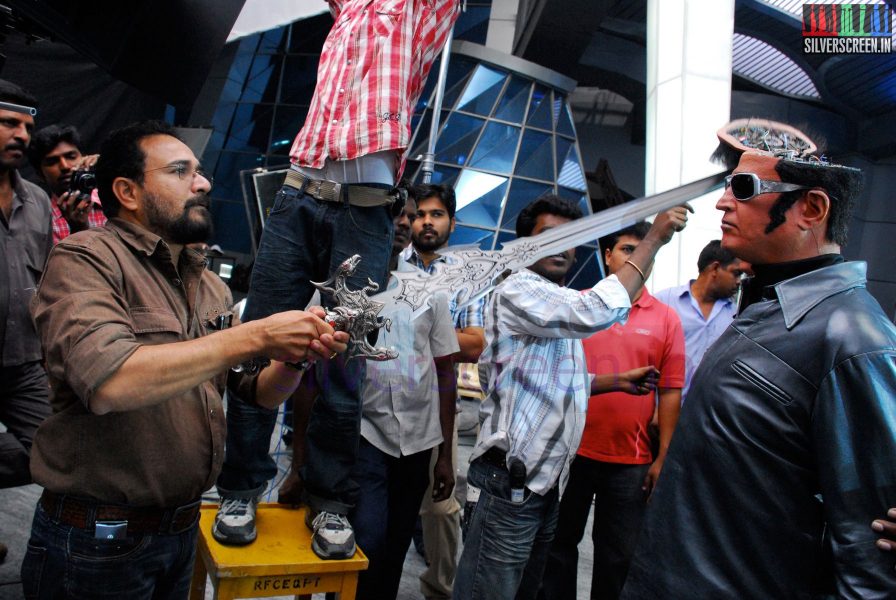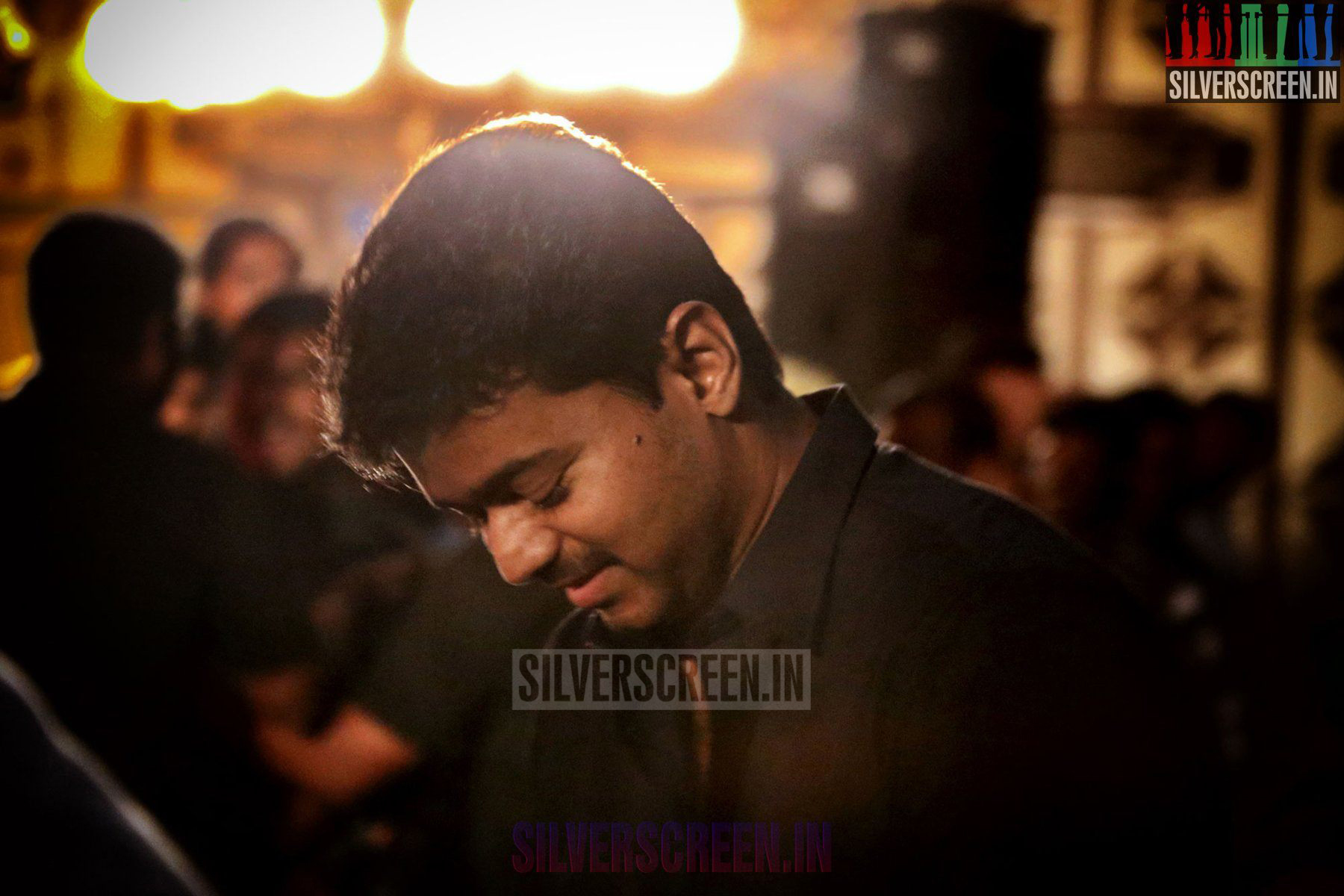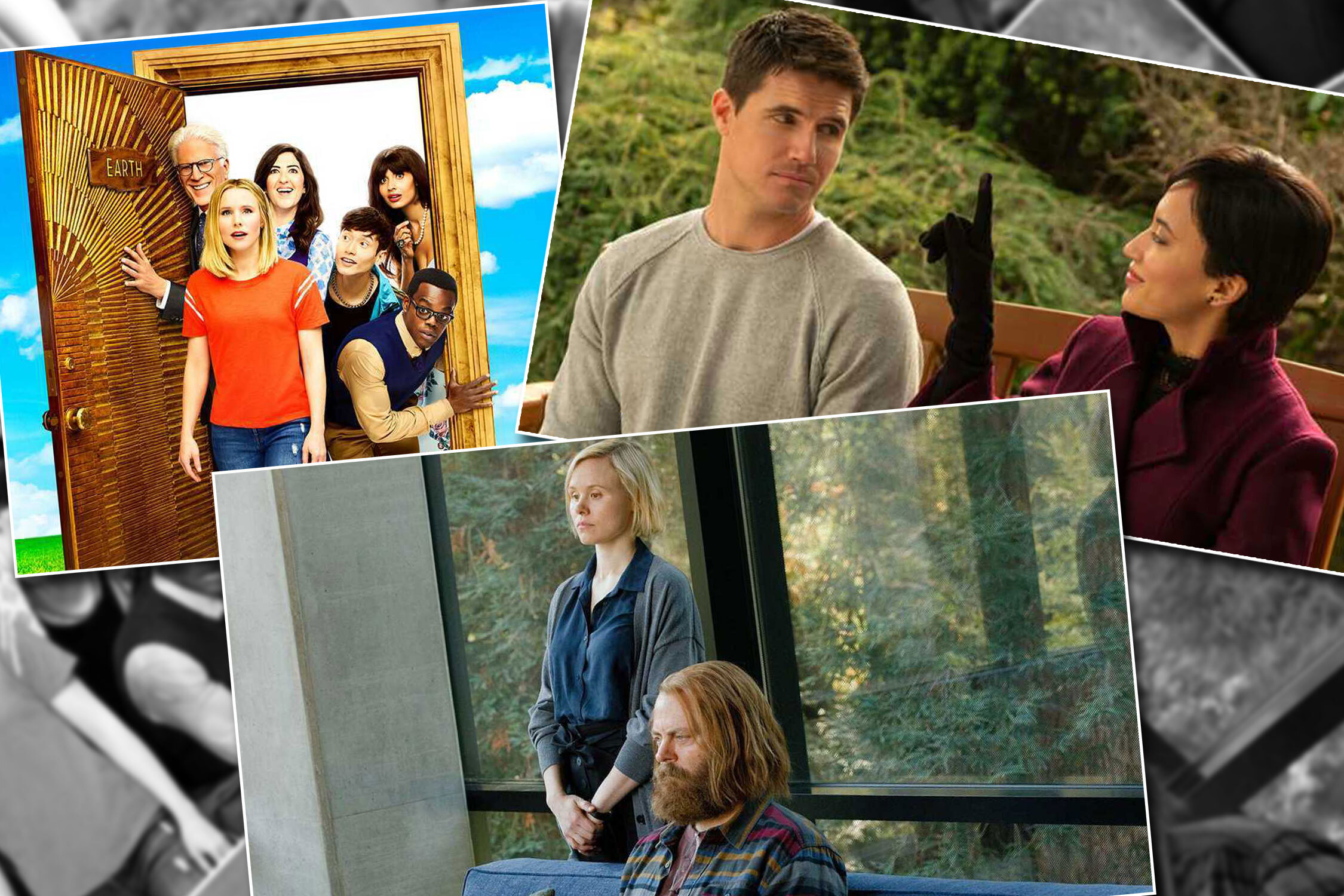25 years, 113 films and 3,500 ad films later, 52-year-old Sabu Cyril is still hard at work. Shuttling between humongous sets, sketching thrones and crowns on his note pad, shouting out instructions to his bevy of assistants, and brain storming with cinematographers, he is still having the time of his life.
As luck would have it, one of Sabu Cyril’s earliest successes came at a price. For a Malayalam film, Advaitham (1991), he had created a temple on the sets. “Every morning, it was heart-warming to see people coming in to offer prayers and even drop money into the dummy hundi,” he recalls. But his joy was short-lived when he realised that even the National Award jury members fell for the authenticity of his temple. He lost the award that year. And that day, he recognized the biggest irony of his job: the less people notice your work, the better you are at it. Even today, he dreads the thought of anyone specifically pointing out any of his creations. “That would be my biggest failure,” he laughs.
When we call, he is on his way to the sets of SS Rajamouli’s Baahubali, one of his biggest films till date, “where every hour is a challenge”. It’s a period film, made on a large canvas with lots of CG effects. Period films are a huge responsibility, he says, as there is no room for mistakes. There was no reference material; “the only brief being that it has to be Indian and big.” So everything was created from scratch: chairs, thrones, palaces, swords, armour and costumes. Cyril was given six months to work on the sets.[quote align=’right’]It is easy to work with houses. I take stock of buildings and architecture everywhere. Like how actors observe people, I observe building and construction.”[/quote]
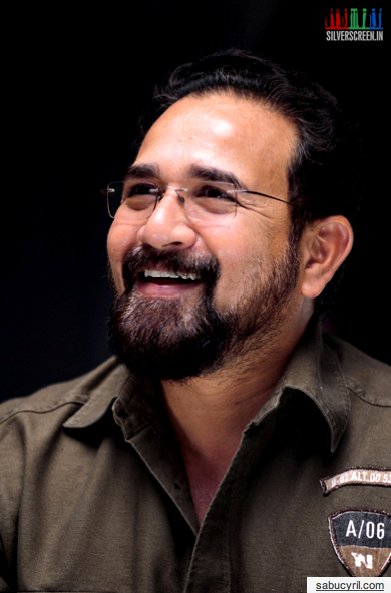
Art Director Sabu Cyril
Lingaa – Cyril is almost done with the sets – happened at the insistence of director KS Ravikumar. The director even agreed to shoot in Hyderabad to accommodate his favorite art director. “Lingaa is partly period; but an out-and-out commercial film. The period sequences were shot in Mysore and Hyderabad,” he explains, “It is based in the pre-independence period as well as in current times. Personally, it wasn’t a difficult film to do.” He also shares a great rapport with KS Ravikumar, just as he does with director Priyadarshan, with whom he has done over 90 films.
[soliloquy slug="sabu-cyril"]
[quote align=’left’]“But I gel with everyone. I’m like water, you can pour me into any mould.”[/quote]As a rule of thumb, Cyril generally takes on only two films at a time – a big budget project and a relatively smaller one. But Baahubali, he admits, is as good as working on four movies, which is why he hasn’t signed on any fresh project. The art director doesn’t always need to be on the sets 24/7, but Cyril says he tries to spend as much time on the spot as he gets a thrill out of watching scenes unfold before his eyes. Most of his better assistants are already established art directors, so he prefers new-comers for the job.
Cyril agrees that art direction has evolved a lot over the years, especially with the kind of raw material that is readily available in the country today. He uses everything from silicon and plaster of Paris to cellophane; but for high-rise buildings, he prefers the fuss-free but expensive aluminum compound panels that render a “modern and futuristic” look to his works. It can also be recycled, Cyril educates us, adding how he first used the mould for Enthiran, Krish 3 and now, Lingaa.
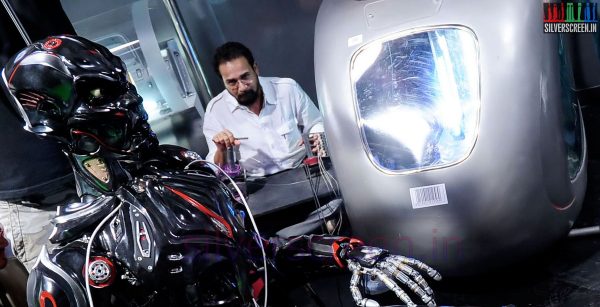
Art Director Sabu Cyril on the sets of Endhiran (Enthiran) the Robo
He typically starts a project after some thorough script-reading. Then come the story boards and the visual detailing. He also sits with the director to finalize the location, gathers material and props for the shoot, and his work is set in motion. Technology, he agrees, is of massive help – besides making the process a lot quicker. Most of the designs are on a computer, while a few are on paper. Photoshop is used extensively, and he also mentions the use of a 3D modelling program called SketchUp that helps with lighting and model placements. His background in advertising comes in quite handy as well, especially when he has to work on story-boards and concept drawings. While every movie is planned on a budget, most go over, he says. Also, indoor sets are always cost-effective and weather-proof.
For Cyril, every movie is a mix of images and props; blue-prints and logistics; models, sets and hues. And, there is a constant tussle between big and small budget projects; reference points, realism, fantasy and CG effects. While Priyadarshan’s Kanchipuram had a smaller budget, it was a realistic period film that asked for a lot of references. But Ashoka, he remembers, remains one of his toughest period movies till date as there was no backgrounder to work on. “I didn’t have any material. We had to take liberty with our imagination regarding stupas, lion-headed pillars and other architecture.[quote align=’right’] He recognizes the biggest irony of his job: the less people notice your work, the better you are at it. Even today, he dreads the thought of anyone specifically pointing out any of his creations. “That would be my biggest failure,” he laughs.[/quote]
It is equally challenging to design futuristic films as there is no material or reference to fall back on.” And despite being a part of many grandiose films, Cyril reveals he isn’t a fan of them. He recalls working on Farah Khan’s Main Hoon Na, and being horrified at the director’s request of wanting glossy tints on college walls. He did relent, though. And that day, Cyril understood another golden rule that he would later abide by: never bring your personal likes and dislikes into the business. He took up Farah Khan’s second movie as well – Om Shanti Om – and gamely agreed to design even more outlandish sets. And while working in the Telugu industry, Cyril was quick to notice their fondess for the colour gold. He picks Priyadarshan’s Kaalapani and Shankar’s Enthiran as his most satisfying films, while Hey Ram remains a sour memory. A lot of hard work went unnoticed.
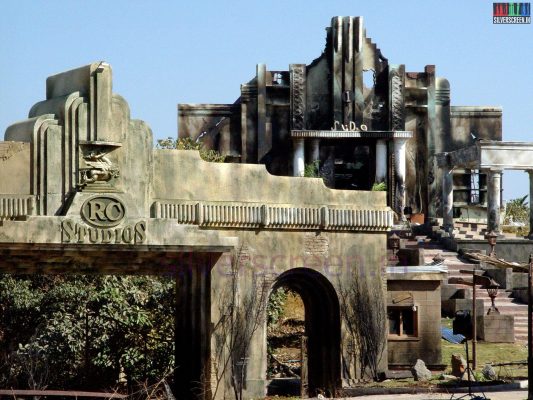
Art Director Sabu Cyril – Burn
His first assignment came in 1990 – for the Malayalam film Iyer the Great, where he worked as the second-unit art director. Also, his association with Priyadarshan has been unforgettable. He has received as many as 10 awards for his work on Priyadarshan’s films. During their first project – Muskurahat (1992) – Cyril recalls his words- “The day you find a better director, you can leave me, and when I find a better art director, I will leave you.” So with Priyadarshan, Cyril admits, it is more to do with the “joy of working”. [quote align=’right’] “Once, Shekhar Kapoor arrived on the sets of a Hindi film,and he was raving about my work. I badly wanted to tell him how much I loved his Elizabeth, but words wouldn’t come out. We always feel we are letting ourselves down by appreciating others, isn’t it?”[/quote]
Another crucial partnership for art directors would be with the cinematographer. “A difference of opinion with the director can be overcome,” offers Cyril “but not with the cinematographer as he knows our contribution much more than the director.” He would rather not work with a Director of Photography who can’t understand the basics of art direction. But till now, he has had a good run on that front and admits that for most projects, DOPs themselves recommend him to the director. Otherwise, most directors ask him to choose the cameraman. “Hollywood tries to split these two creative minds, which is an unhealthy idea.”
Having worked across the country, Cyril observes technicians are more acknowledged down south, than in Bollywood, as the latter is more star-struck. “But they also know how to get work done. Art directors were mostly Bengalis there. Now it is changing.”
[quote align=’left’]“The day you find a better director, you can leave me, and when I find a better art director, I will leave you.”[/quote]Sabu Cyril’s real-life props have often fooled many people. For Samsaram Athu Minsaram, he had created a house at AVM studio. He recalls how someone stepped into the washroom thinking it was real. For Yaan, he made a glass bottle with broken pieces and took it to Ravi K Chandran’s house. When they went out for a chat, Chandran’s wife had thrown it away. “A lot of people get fooled on the sets. We are like magicians, we get a kick out of creating an illusion.” Kannathil Muthamittal was more realistic. He tells us about the ship that he constructed; the one in which Nandita Das travelled from Srilanka to India, and the houses of Simran and Madhavan he built in Rameshwaram. Recreating a city is tough, he says. One requires a keen sense of observation for it, imbibing every tiny detail while working on the sets. And Mumbai taught him that. For Mani Ratnam’s Ayutha Ezhuthu, he created Calcutta in Chennai and Chennai in Mumbai. “I noticed Calcutta’s long-cable wired houses, waterlogged streets and trams. They were incorporated into my work. It is easy to work with houses. I take stock of buildings and architecture everywhere. Like how actors observe people, I observe building and construction.”
Even after two decades, “everyday is a challenge,” Cyril admits. “As even the unavailability of a single prop can throw you off course.” During Kaalapani, he perspired to make 6,00,000 bricks as the raw material wasn’t readily available. But the “universe thankfully conspired to help me that day,” he laughs.
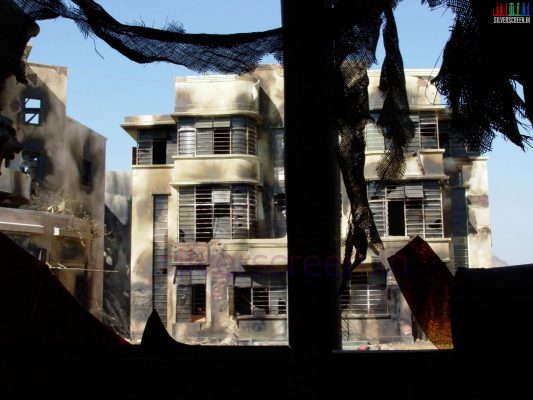
Art Director Sabu Cyril – Burn
The art-director loves being up-to-date with technology; it’s a trait that he picked up while working in ads. “A commercial has to run only for a few minutes, but the preparation time is the same as it is with films,” he declares, “But there’s more recognition with movies. I always strike a balance between the two as one learns more through ads. Besides, with films, we don’t have the liberty of time. You need to wait for stars, lighting etc. I am lucky to be doing both.” Also, 3D makes cinema come alive, he says. “You have to experience films like Avatar – larger than life – in theatres.” Yet, he doesn’t think CG will completely take over art direction in Indian cinema. “I am very happy to be a part of this period in the film industry where I can create tides, stars and the moon in a jiffy – but we need to strike a balance.” Transformers impressed him, and he is especially glad that Robot came before it.
Cyril was bright in school and was good at sports as well. But when he wanted to take up art as a career, his father, who worked in a tea estate, put his foot down as he thought it wouldn’t bring in any money. “I convinced him that I will only do what people want me to do. I will be a commercial artist and not sit and paint and wait for others to buy my paintings,” he smiles. Armed with a degree in Visual Communication, he started working on ads. He also finished a graphic-designing course in between; and created logos and labels for star hotels and pharmaceutical companies.
Yes, Kerala has been a part of his aesthetics, but Cyril likes to think he “belongs to this world and not a region.” He confides though that he has the arrogance of a Malayali and he dislikes it. “Once, Shekhar Kapoor arrived on the sets of a Hindi film,and he was raving about my work. I badly wanted to tell him how much I loved his Elizabeth, but words wouldn’t come out. We always feel we are letting ourselves down by appreciating others, isn’t it?”
Recommended
There is no pursuit for a “dream project” with him as he “never plans ahead, lives in the moment and never worries about tomorrow.” And for those who want to pursue art direction, there is a tried-and-tested Sabu Cyril model to fall back on, which is “50% common sense, 30% aesthetic sense and rest: hard work. It also helps, he says, “if your hobby is your job and you commercialised it”.
“And of course”, he finishes solemnly, “follow the Bhagavad Gita.”
Karmanye vadhikaraste, Ma phaleshu kadachana l
Maa karma phala-heturbhuh; Maa te sangostv akarmani ll *
The Sabu Cyril interview is a Silverscreen exclusive.
*You have the power only to act, and not over the result of your actions.
Therefore, act without the prospect of a result and without succumbing to inaction.
– Bhagavad Gita, Chapter 2, Sloka 47
